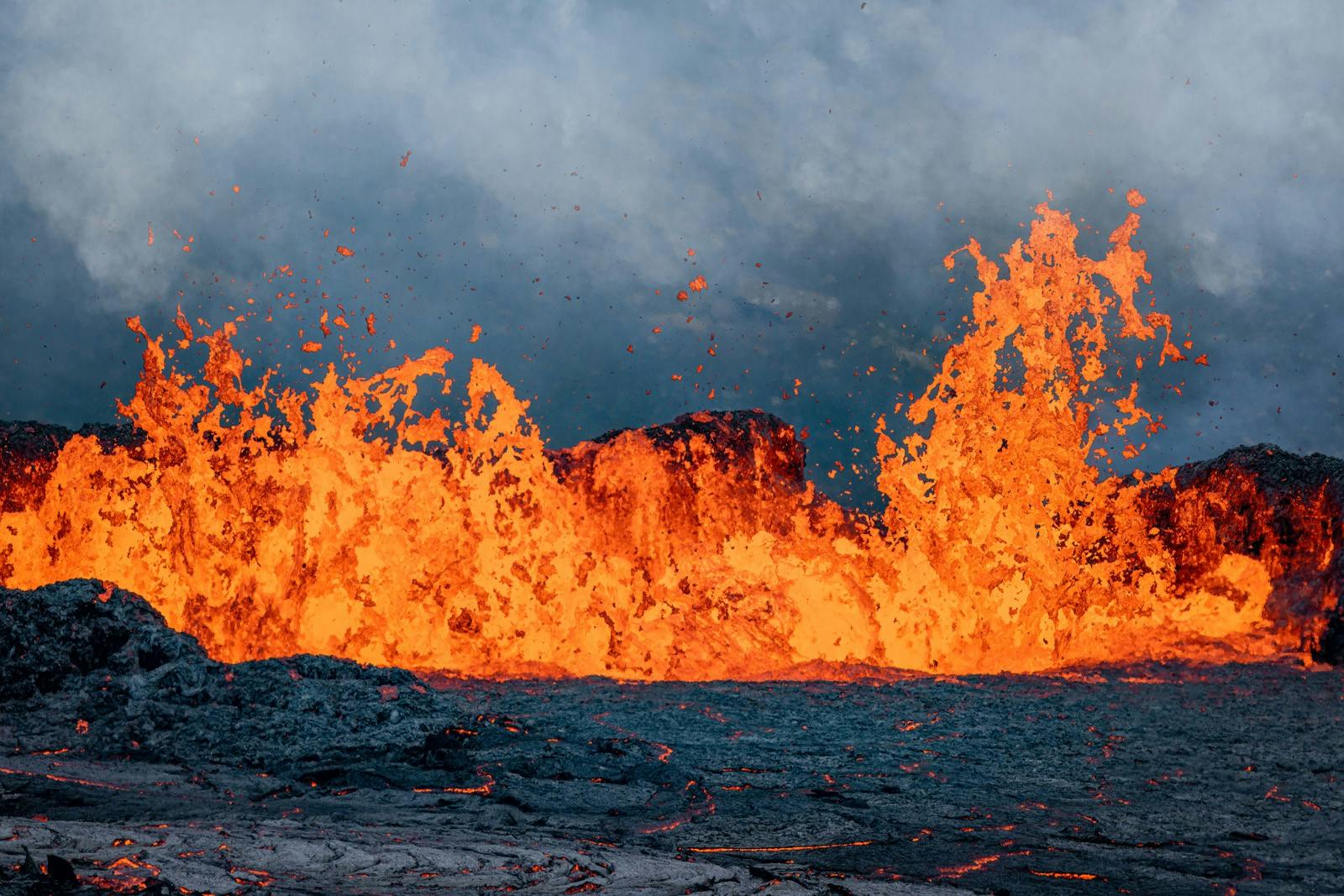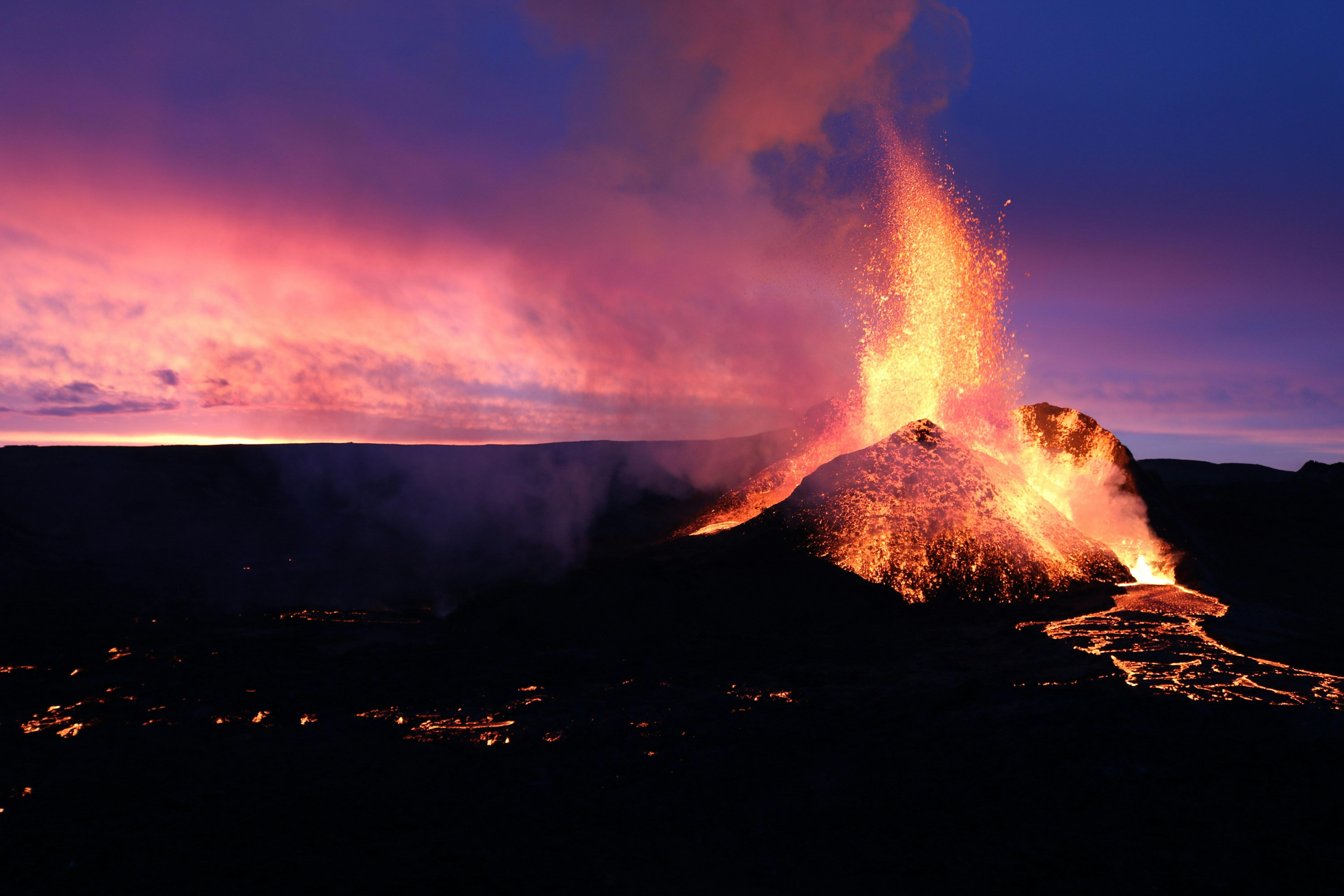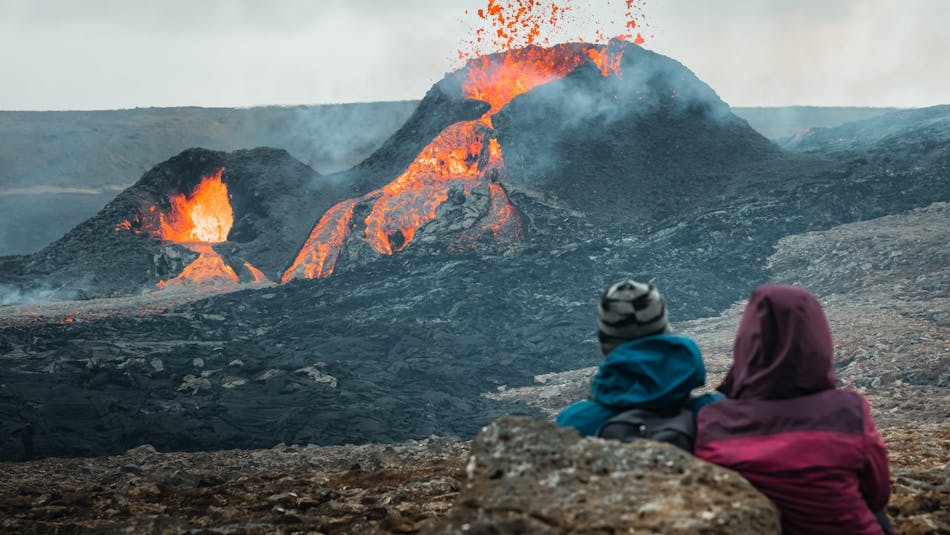
Fagradalsfjall is Icelands hottest spot at the moment
Safety at Fagradalsfjall eruption site
When visiting something as extreme as a volcanic eruption site, preparing for the unexpected is crucial. Make sure you are wearing the appropriate clothing, have your gadgets charged and ready, and familiarize yourself with the routes and regulations at the site. All so you can safely enjoy the exotic experience.
Check the weather for Fagradalsfjall
In Iceland, you should always expect four seasons in one day. Be aware of the weather outlook on the day of your hike, check the forecast regularly and stay alert for changes. Icelandic weather can be unpredictable and change drastically in a matter of hours and even minutes.
Also, note that the eruption site is on top of a mountain where the weather can differ greatly from the coastal areas.
Clothing - Layers on top of layers
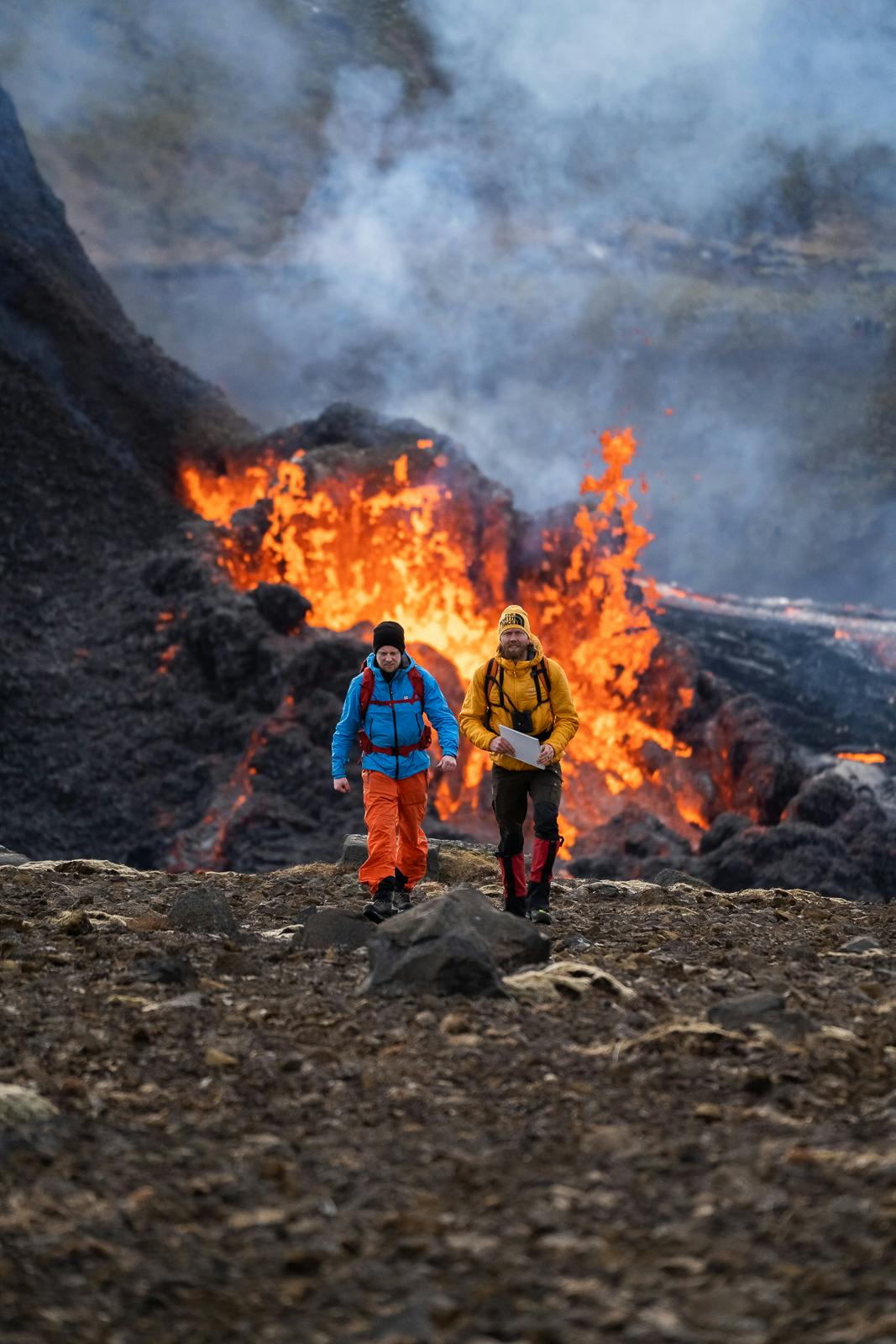
Wear warm, waterproof clothing and a pair of proper hiking boots for visiting the eruption site
It is very important to wear warm and waterproof clothing. Wearing three layers of clothes is recommended, with the outermost layer waterproof. A warm hat, scarf and gloves are also necessary and a pair of waterproof hiking boots are essential. Sneakers and jeans are absolutely not suitable and may put you in danger of hyperthermia if the weather turns out to be colder and wetter than you expected.
Equipment - Your phone is your best pal
Your fully charged phone is the most important asset to bring and a power bank for recharging. Keep in mind that your batteries last shorter when it is cold. In case of an emergency or a bad outlook for your situation, don't wait to call 112. Waiting to call may make the situation worse and more difficult for the Search and Rescue teams to deal with.
Hiking poles are fundamental since some of the hiking paths are pretty steep. A headlamp is also necessary; you may get delayed even if you don't plan to stay until dark. Ice spikes for your shoes are also crucial for the colder seasons as the hiking trail may be icy. Make sure to pack some energy-rich food and water. Don't forget the camera and binoculars are also nice to have. Sunglasses may come in handy and a basic first aid kit is always a good idea.
Threats at the eruption site
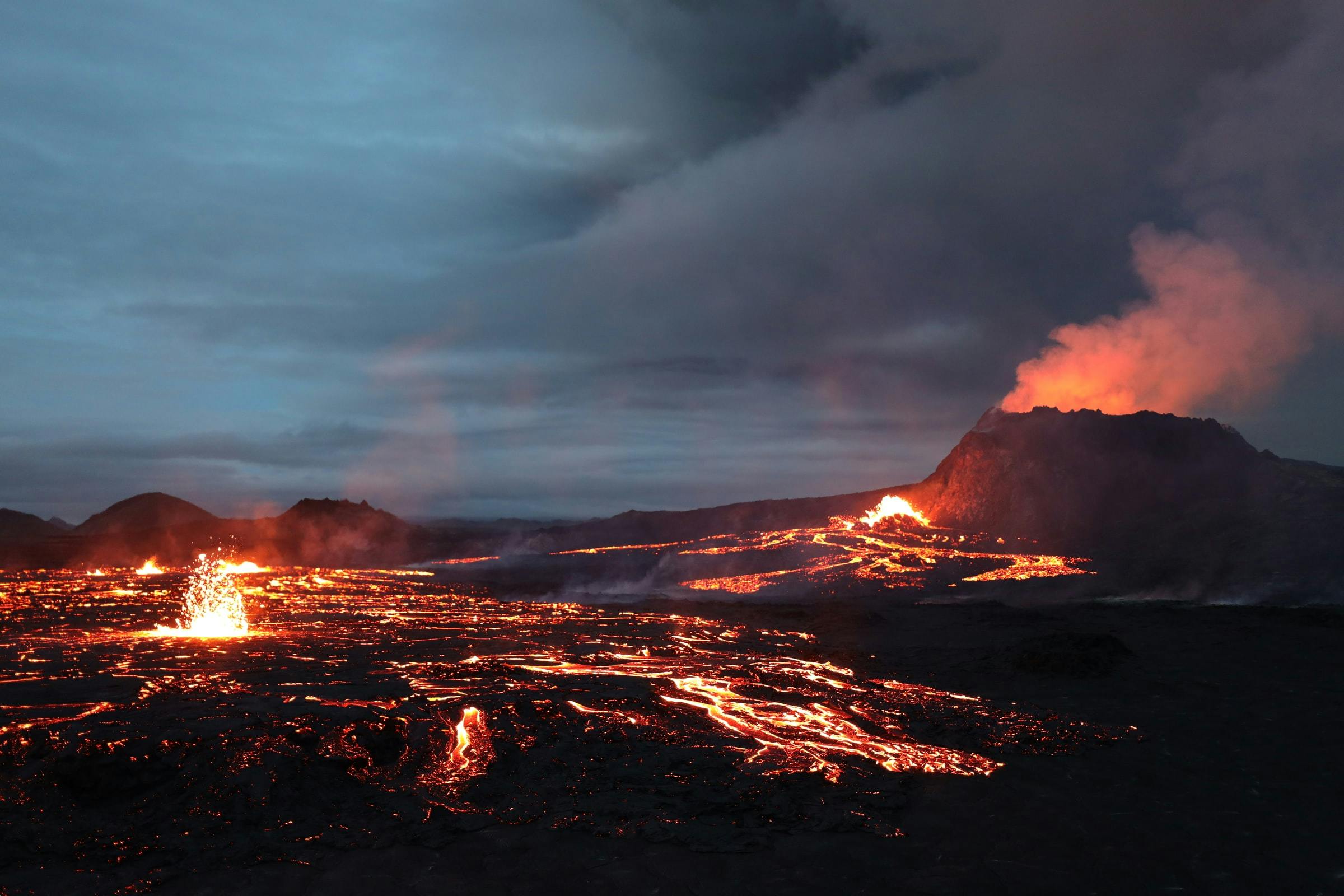
Be aware of the dangers involved in being close to a volcano that recently erupted
Several hazards need to be considered when being close to an active volcano that recently erupted. Conditions can change quickly and it is important to know how to react to avoid threats and dangerous situations. Here are the most vital ones:
- Check SafeTravel.is. for hazard alerts at the eruption site and your other travels in Iceland.
- Avoid the gas. Volcanic gasses can be poisonous. Even though the eruption is paused, there is still degassing from the lava. Avoid staying in depressions in the landscape and leave the area immediately if you feel any discomfort. Please note that children are more sensitive to gas.
- Do not walk on the lava! Even though it can look as it has cooled, there may be burning hot lava underneath a thin crust. If the crust breaks, you will fall in.
- Weather changes can be sudden. Always expect cold, wet, windy and icy conditions, even if you begin your hike in good weather.
How to behave around an active volcano?
Read about the threats from gas, hot lava and weather mentioned above, and be aware of your surroundings at all times. Use your best judgment and don't follow the lead of other people you don't know, they may not be aware of the dangers. Keep in mind that conditions can change very quickly at the eruption site, both the weather and the behavior of the eruption. It can stay quiet for a while and then suddenly turn on. Stay alert and do not leave the designated routes. Keep your gear, cellphone and safety equipment close.
If you plan to hike to the volcano without a local guide, make sure you read the article about hiking to the volcano.
Pay attention to the ICE-SAR people, rangers or police on the site as they may be giving out important information. Don't hesitate to ask them if you have questions.
Lava is protected by nature conservation law in Iceland.
So please, treat nature with respect and don't break a piece of the lava, walk on it or throw rocks or garbage on it.
And finally, please stay safe and enjoy this fantastic experience! :)
